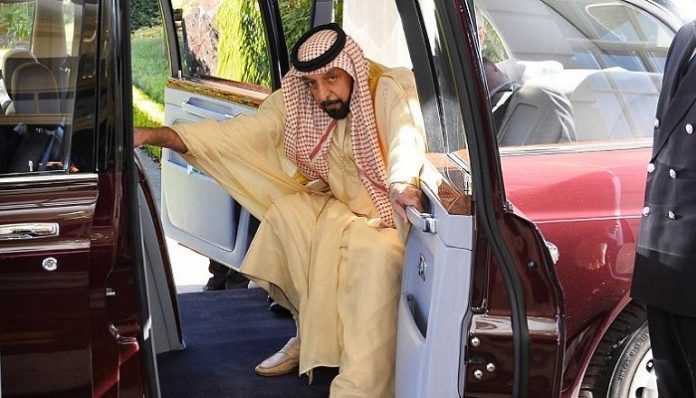According to Pak Sahafat News Agency, The official UAE news agency (WAM) announced on Friday Khalifa bin Zayed Al Nahyan, President of this country, has passed away.
The official UAE news agency wrote: “The Ministry of Presidential Affairs extends its condolences to the people of the UAE and the Arab and Islamic Ummah and to the whole world on the death of the leader of the homeland and guardians of the country, His Highness Sheikh Khalifa bin Zayed Al Nahyan, President of the country.”
According to the WAM announcement, Caliph Bin Zayed Al Nahyan passed away on Friday, May 13th. The UAE Ministry of Presidential Affairs also declared 40 days of public mourning in the country, announcing that during this period the UAE flag will be partially raised and public and private organizations and departments of the country will be closed for 3 days.
Khalifa bin Zayed was the eldest son of Zayed bin Sultan Al Nahyan, the founder of the UAE government and his crown prince, who ruled Abu Dhabi after the death of his father, and was elected President of the UAE on November 3, 2004.
Born in 1948 in the Al-Sharqiya region of the Emirate of Abu Dhabi, he completed his basic education in Al-Ain.
The caliph has eight children, including two sons, Sultan and Muhammad, and six daughters.
Read more:
The UAE has agreed to build a fully Jewish neighborhood in the country
He followed in his father’s footsteps throughout his life, and the first official position he held was the representative of the ruling region in the East and the head of the courts in this region. On February 1, 1969, Khalifa bin Zayed was appointed Crown Prince of Abu Dhabi and Head of the Defense Department, taking command of the UAE Defense Force, and played a key role in developing and transforming it from a small security force into a large force with multiple functions and equipped with Modern equipments.
On July 1, 1971, the Caliph chaired the first Council of Local Ministers of the Emirate of Abu Dhabi, as well as the Minister of Defense and Finance, which preceded the formation of the UAE Federal Government. In February 1974, following the dissolution of the Local Council of Ministers, the Caliph was appointed Chairman of the Executive Council, which replaced the Council of Ministers of the Emirate of Abu Dhabi.
He also became chairman of the UAE Oil Council, which he held before his death. In May 1976, he was appointed Deputy Commander-in-Chief of the Armed Forces by order of the Federal High Council. The local defense forces of each of the seven emirates were merged under a single command, and defense became one of the responsibilities of the federal government.
The UAE witnessed changes in its laws as well as international and regional relations during the reign of Caliph bin Zayed Al Nahyan. For example, in late 2021, the ruler of Abu Dhabi issued a decree amending the country’s former civil law, which was based solely on Islamic law, to allow non-Muslims to marry, divorce, and have joint custody of their children.
Also, Syrian President Bashar al-Assad’s first visit to an Arab country since the start of the country’s civil war in 2011 in the United Arab Emirates in March, during the reign of Caliph bin Zayed.
Muhammad bin Zayed is expected to become the third president of the United Arab Emirates since its inception and to succeed Caliph bin Zayed.


